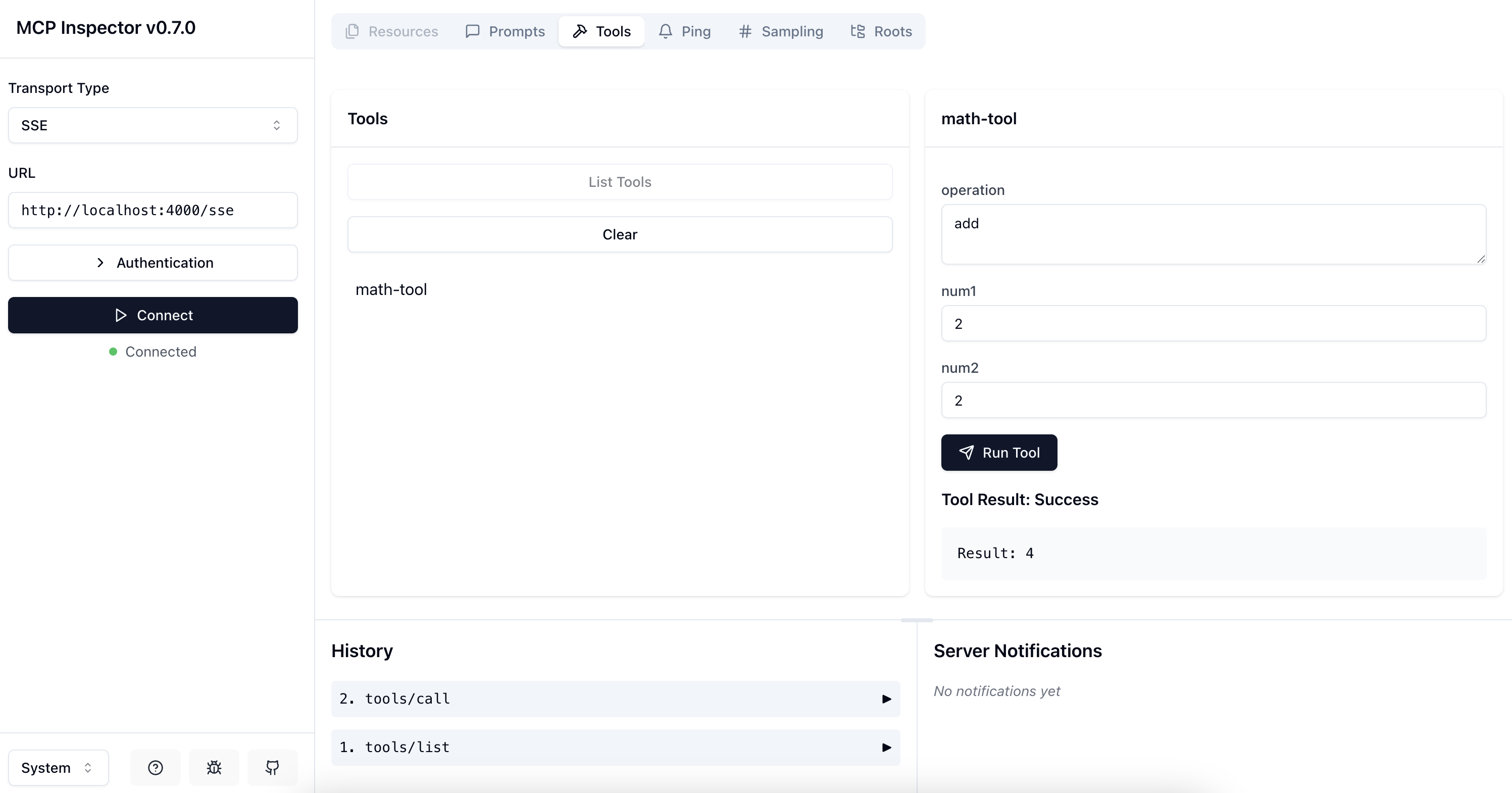Manages environment configuration for the MCP server through .env files
Handles HTTP endpoints for server-sent events (SSE) and message communication in the MCP server
Used for version control and cloning the repository to set up the MCP server
Hosts the MCP SDK repository referenced in the README
Serves as the runtime environment for the MCP server (v16 or higher required)
Package manager used to install dependencies and run scripts for the MCP server
Provides full type support for the codebase, enhancing the developer experience
Alternative package manager that can be used to install dependencies for the MCP server
Hello World MCP Server
Welcome to the Hello World MCP Server! This project demonstrates how to set up a server using the Model Context Protocol (MCP) SDK. It includes tools, prompts, and endpoints for handling server-sent events (SSE) and messages.
This project is part of the blog post: Building a TypeScript MCP Server: A Guide for Integrating Existing Services. Visit the blog to learn more about the concepts and implementation details behind this project.
Features
MCP Integration: Uses the MCP SDK to create a server with tools and prompts.
Express Framework: Handles HTTP endpoints for SSE and message communication.
Environment Configuration: Uses
.envfiles for easy configuration.TypeScript Support: Fully typed codebase for better developer experience.
Related MCP server: Echo MCP Server
Prerequisites
Before you begin, ensure you have the following installed:
Node.js (v16 or higher) - Download here
npm (comes with Node.js) or yarn
Getting Started
Follow these steps to set up and run the project:
1. Clone the Repository
If you haven't already, clone the repository to your local machine:
2. Install Dependencies
Install the required dependencies using npm or yarn:
or
3. Configure Environment Variables
The project uses a .env file to configure the server's port. A sample .env.example file is provided.
Copy the
.env.examplefile to.env:cp .env.example .envOpen the
.envfile and update thePORTvariable if needed. The default is4000.PORT=4000
4. Build the Project
Compile the TypeScript code into JavaScript:
This will generate the compiled files in the dist directory.
5. Run the Server
Start the server in production mode:
Alternatively, for development mode with live reloading, use:
Testing the Server
1. Using the MCP Inspector
The MCP Inspector is a tool to test and inspect your MCP server. You can use it to verify that your tools and prompts are registered correctly.
Run the following command to inspect your server:
This will open an interactive interface where you can test the tools and prompts registered in your server like below.

Project Structure
Here’s an overview of the project structure:
Troubleshooting
Common Issues
Port Already in Use: If you see an error about the port being in use, update the
PORTvariable in the.envfile.TypeScript Errors: Ensure you’ve installed all dependencies and are using the correct Node.js version.
Debugging
Use the following command to debug the server:
This will start the server with live reloading and detailed logs.
Related Projects
Ollama Pydantic Project: A counter project implementing an LLM agent that utilizes the tools developed in this project. Learn more about it in the blog post: Integrating MCP Server with a Local LLM Chatbot.
Contributing
Contributions are welcome! Feel free to open issues or submit pull requests.
License
This project is licensed under the MIT License. See the LICENSE file for details.